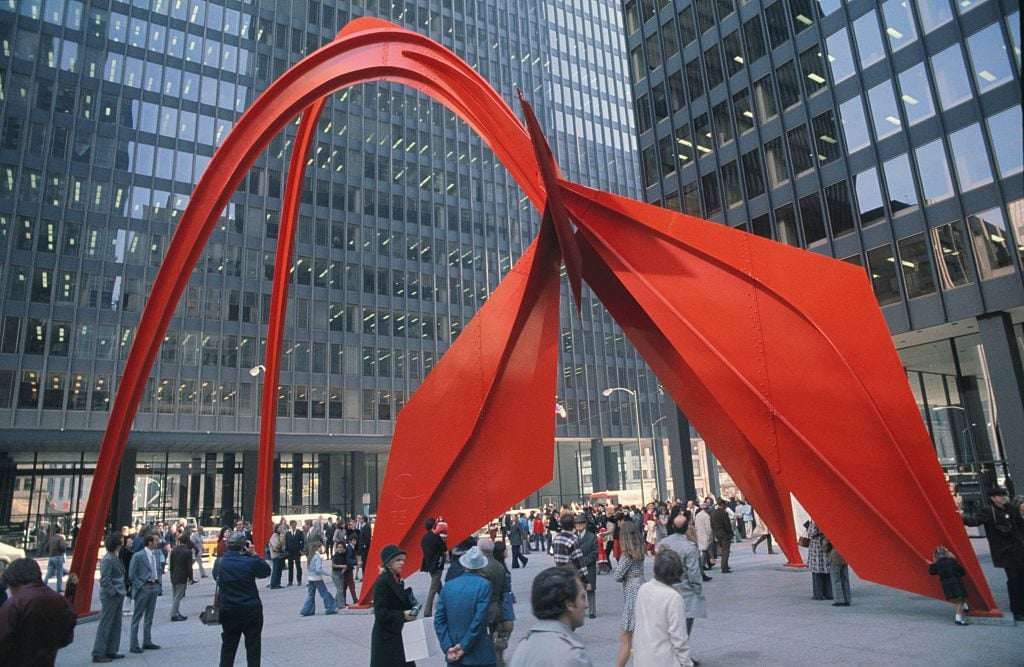Politics
U.S. President Biden Has Reversed a Trump-Era Rule Requiring Pro-American Art in Federal Buildings
Trump’s previous policy required that federal art “illustrate the ideals upon which our nation was founded.”

Trump’s previous policy required that federal art “illustrate the ideals upon which our nation was founded.”

Taylor Dafoe

President Joe Biden has reversed a Trump-era order requiring that any visual art added to government buildings must portray American historical figures or ideals—and not be abstract.
The new document, announced by the General Services Administration (GSA), amends the provisions of the Art in Architecture program, which commissions visual art in federal buildings nationwide. The updates effectively abrogate the narrow stipulations of style and subject matter put in place by the previous administration.
“GSA’s public art collection is a national treasure, and this rule reflects the government’s important role in ensuring equity and opportunity for artists of all kinds and from all communities,” said the agency’s administrator, Robin Carnahan, in a statement.
“Public art is for the people,” Carnahan went on, “and we want to make sure our public spaces reflect the rich diversity and creativity that strengthens and inspires them.”
Trump’s previous rule, published in the summer of 2020 amidst country-wide riots that erupted after the murders of George Floyd and Breonna Taylor, required that federal art “portray historically significant Americans or events of American historical significance or illustrate the ideals upon which our Nation was founded.”
Statues, the document said, should depict figures like the Founding Fathers, abolitionists, labor leaders, and police officers and firefighters killed or injured in the line of duty. It also required that all portraits, regardless of their medium, “be a lifelike or realistic representation of that person” and not “abstract or modernist.”

A federally commissioned mural by artist Dan McCleary called American Jury (2010). Photo: GSA\Kenny Jacobs.
Trump also used the mandate to weigh in on the debate around the recent toppling of monuments dedicated to Confederate generals, colonizers, and other controversial figures. “In recent weeks, in the midst of protests across America, many monuments have been vandalized or destroyed,” his text read.
“These statues are not ours alone, to be discarded at the whim of those inflamed by fashionable political passions; they belong to generations that have come before us and to generations yet unborn. My administration will not abide an assault on our collective national memory.”
In contrast to Trump’s chauvinistic rhetoric, the Biden administration’s update to the Art in Architecture policy aims to diversify examples of federal artwork and grow the pool of creators eligible to contribute them.
“With the issuance of this rule, GSA expands the opportunities for artists to be considered for an artwork commission,” said Krystal Brumfield, an associate administrator at the GSA Office of Government-wide Policy. “At the same time, GSA is seeking input and feedback from the public on how GSA can ensure that the Art in Architecture program promotes civic engagement and aligns with the priorities of diversity, equity, and inclusion of underserved communities.”
Art in Architecture has produced roughly 500 pieces of art on federal property since 1972, when the program was taken over by the GSA, according to CNN.
This is not the first time Biden has overturned a Trump-era rule meant to homogenize culture.
In December 2020, amidst a spate of last-minute, lame-duck moves, the previous president signed an executive order to “make federal buildings beautiful again.” He declared that all new government structures costing over $50 million need adhere to classical designs and be “visibly identifiable as civic buildings”—a gesture that drew comparisons to fascist ideology.
President Biden revoked that executive order in February 2021.